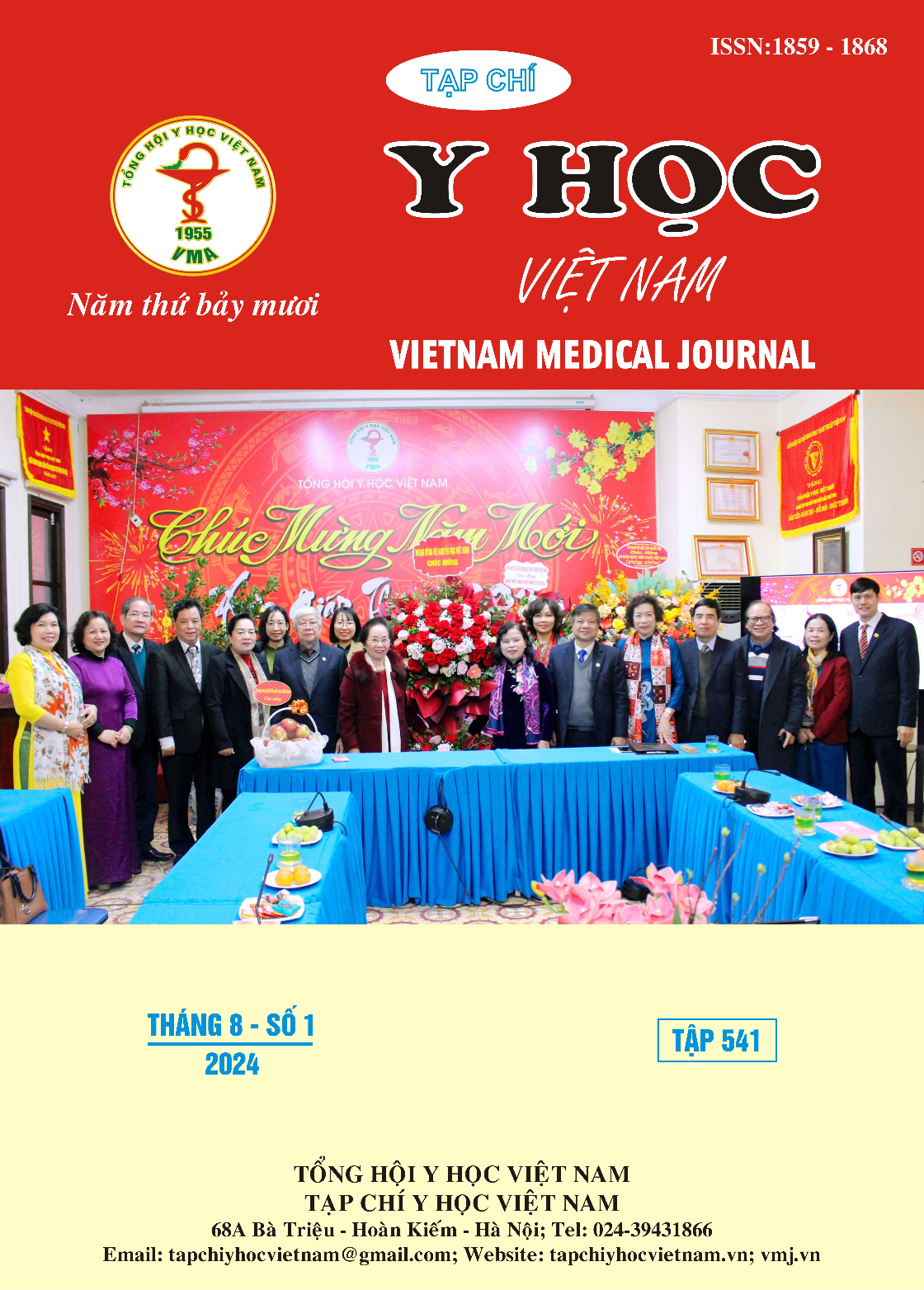ROOT MORPHOLOGY AND ROOT CANAL SYSTEM OF UPPER FIRST MOLARS IN A GROUP OF VIETNAMESE PEOPLE ON CONE BEAM COMPUTED TOMOGRAPHY
Main Article Content
Abstract
Background: The anatomy of the root canal system is extremely complex such as morphology, lateral canal, or functional canal. With the desire to help endodontists achieve treatment success in clinical practice, we carry out this study: “Analysis of root characteristics and root canal system of upper first molars (UFM) with Cone Beam Computed Tomography”. Objectives: Describe the characteristics of the root and root canal system of upper first molars (UFM) with Cone Beam Computed Tomography in a Vietnamese group. Results: The results of the study showed that 96.4% UFM has 3 roots, 0.6% UFM has 4 roots and teeth with 2 roots were not detected. Most of UFM have 4 root canals and the mesiobuccal one usually has more than 1 canal (69.8%). Canal morphology of UFM exhibit complex anatomical variations such as C-shaped configuration. Conclusions: The results of the study showed that 96.4% UFM has 3 roots, 0.6% UFM has 4 roots and teeth with 2 roots were not detected. Most of UFM have 4 root canals and the mesiobuccal one usually has more than 1 canal (69.8%). Canal morphology of UFM exhibit complex anatomical variations such as C-shaped configuration.
Article Details
Keywords
Cone Beam Computed Tomography, upper first molar, root canal morphology
References
2. P. Neelakantan, C. Subbarao, R. Ahuja, (2010). Cone-beam computed tomography study of root and canal morphology of maxillary first and second molars in an Indian population. Journal of Endodontics,36 (10), 1622-1627.
3. Y. Kim, S. J. Lee, J. Woo, (2012). Morphology of maxillary first and second molars analyzed by cone-beam computed tomography in a Korean population: variations in the number of roots and canals and the incidence of fusion. Journal of Endodontics, 38 (8), 1063-1068.
4. F. S. Weine, H. J. Healey, H. Gerstein, et al. (2012). Canal Configuration in the Mesiobuccal Root of the Maxillary First Molar and Its Endodontic Significance. J Endod, 38 (10), 1305-1308.
5. A. M. Alavi, A. Opasanon, (2002). Root and canal morphology of Thai maxillary molars. Int Endod J, 35 (5), 478-485.
6. D. Wu, G. Zhang, R. Liang, et al. (2017). Root and canal morphology of maxillary second molars by cone-beam computed tomography in a native Chinese population. J Int Med Res, 45 (2), 830-842.
7. Y. Kim, S. J. Lee, J. Woo, (2012). Morphology of maxillary first and second molars analyzed by cone-beam computed tomography in a korean population: variations in the number of roots and canals and the incidence of fusion. J Endod, 38 (8), 1063-1068.
8. Y. Zhang, H. Xu, D. Wang, et al. (2017). Assessment of the Second Mesiobuccal Root Canal in Maxillary First Molars: A Cone-beam Computed Tomographic Study. J Endod, 43 (12), 1990-1996.


